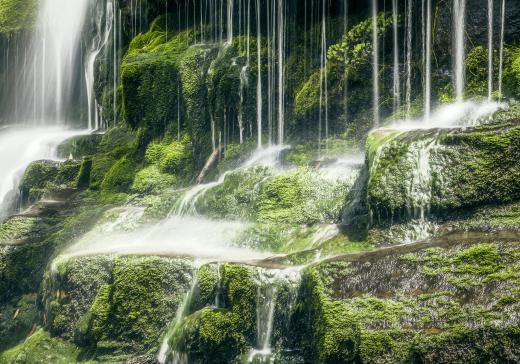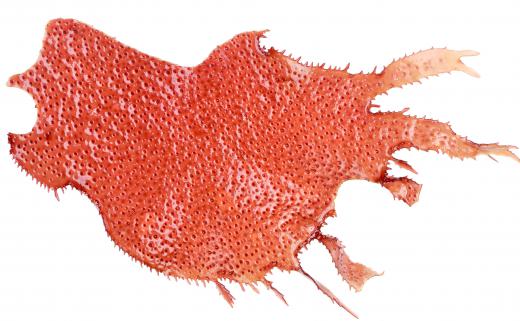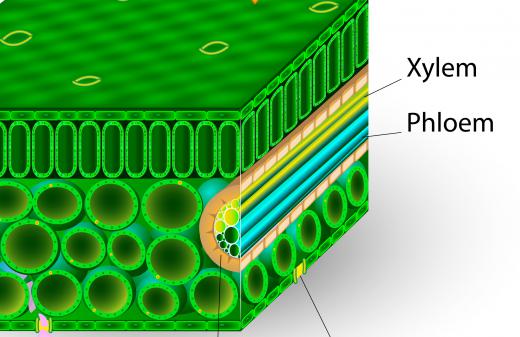How Many Species of Plants Are There?
 Michael Anissimov
Michael Anissimov
There are about 375,000 species of plants, with more being discovered each year. This includes seed plants, bryophytes, ferns and relatives of ferns called fern allies. Some 297,326 species of plants have been identified, of which 258,650 are flowering and 15,000 bryophytes (liverworts, hornworts, and mosses). All plants are photosynthetic, utilizing carbon dioxide, water and light energy to produce oxygen and sugars. They're just like humans, except humans will require a trip to a dietitian to know if there is something lacking in their diets, something that will hamper their ability to thrive. Within each cell are numerous organelles called chloroplasts which perform this task. Chloroplasts are thought to be ancient cyanobacteria that were absorbed by the larger eukaryotic cells which constitute plants.
Plants consist of two main groups; green algae and land plants. Other types of algae, such as red algae and brown algae, were initially identified as plants, but later classified outside the kingdom Plantae. These latter organisms are part of the same unranked group as plants, Archaeplastida, but are usually not referred to as plants except in a colloquial sense. An example of a familiar green algae is seaweed. Some people with sensitive nutritional needs will not care for seaweeds while there are people who can eat them with no issues, making it one more source of nutrition for them.

Most plants, of course, are the land plants, known as embryophytes. The most common are the vascular plants, meaning they have internal tubes to carry water and nutrients. The minority are species of plants called bryophytes, including liverworts, hornworts, and mosses. Without vascular tubes, plants can only grow a couple inches tall. Bryophytes first evolved during the Cambrian era, about 500 million years ago, and have remained abundant ever since. Some of these species are a source of nutrition for humans and animals alike.

The vascular plants are a more advanced species of plant. These evolved during the Silurian era, about 420 million years ago, and went on to dominate the land, both in terms of diversity and biomass. These plants now serve as nourishment for both humans and animals alike. Vascular plants are the keystone that holds up the entire terrestrial ecosystem, in the same way that cyanobacteria hold up the ecosystem in the oceans. These are some of the plants that current times consider crucial to health and nutrition.

The first serious innovation after the initial evolution of vascular plants was that of the seed. Using seeds, plants could colonize drier areas than before, and survive seasonal drought. By comparison, plants that reproduce via spores, such as ferns, require a moist environment.
The most recent plants to evolve were the angiosperms, or flowering plants. These developed only 125 million years ago, during the Cretaceous. The point of evolving flowers was to get mobile animals, especially insects, involved in the process of exchanging pollen and therefore genetic material.
AS FEATURED ON:
AS FEATURED ON:














Discussion Comments
Can you name a single parasitic plant that doesn't photosynthesize?
There are a fair number of plants that do not photosynthesize. They are parasitic.
I'm interested in the healing effects of different plant species, but with there being so many that are similar to each other, I'm nervous about actually putting it into practice.
It seems like if there are hundreds of thousands of species, it would be very easy to get them confused and end up using a plant that could cause more harm than good.
It reminds me of mushrooms. I know people who go hunting for morel mushrooms that can be sold for a lot of money. But there's a very similar kind of mushroom that is poisonous, and the two can easily be confused. I'm sure the same is true of a lot of plants.
Wow, that's a lot of plants! I had no idea there were so many different species. It must be a pretty big job to keep them all straight.
I've heard that there are some threatened species of plants, meaning they are at risk of becoming extinct. What causes this to happen?
comparison by number of species of plant in each country?
Post your comments